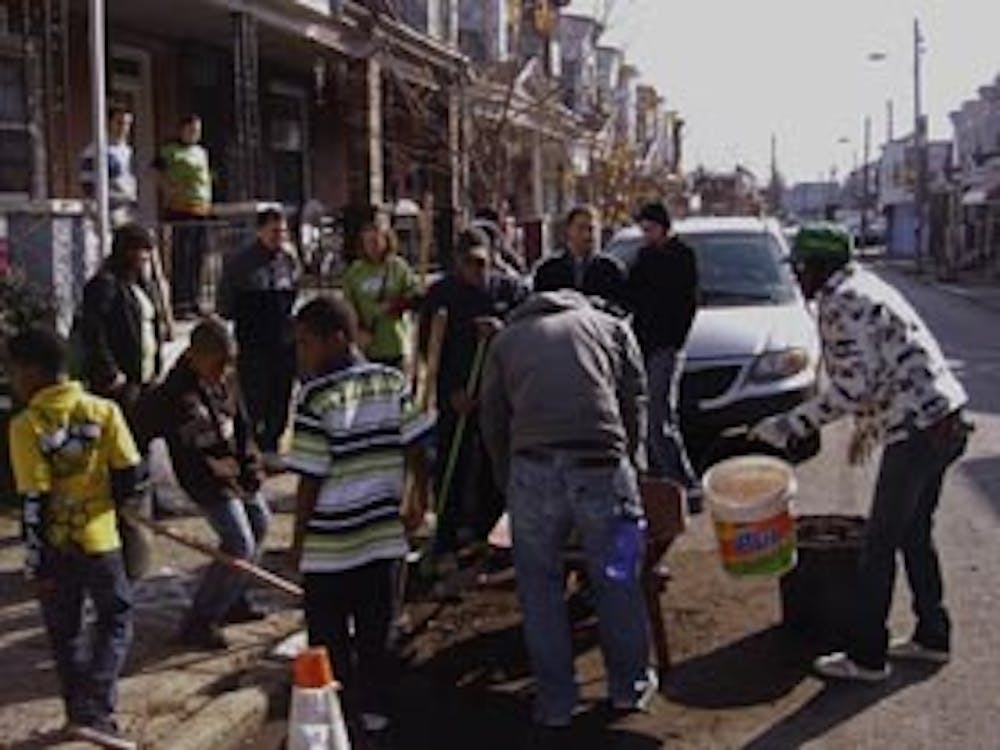
Sometimes trees make all the difference — or at least they make you see green.
University City Green, a nonprofit organization founded at Penn, gathers members of the West Philadelphia community to plant and maintain trees.
During the period of urban renewal in the 1960s, perceptions that trees were “dangerous” and “messy” prompted their mass removal, according to UC Green Executive Director Sue Pringle.
Yelena Yankovskaya, an intern for UC Green and a University of the Sciences in Philadelphia student, said many residents believed that trees help foster crime by providing shade and hiding spots.
Trees were cut down as much of Philadelphia was cemented over. Pringle said West Philadelphia looked like South Philadelphia does today, with one-percent tree coverage.
But trees confer multiple benefits to urban landscapes.
Yankovskaya explained that trees help keep water in the city, which prevents oil from cars and pesticides from backyard gardens from running off into rivers like the Schuylkill.
Trees also benefit the community aesthetically. According to a study by Wharton professor Susan Wachter, the 2,075 trees planted by UC Green from 1998 to 2008 generated an increase of $28 million in property value.
Today, 32 groups work to restore tree cover in Philadelphia. UC Green is the largest, planting one-fifth of the trees that the city receives from the state through the state’s Treevitalize program, which provides free trees and equipment, according to Pringle.
College students in community service organizations and fraternities at Penn, Drexel University and USP, as well as community members, work together to make these projects happen, Pringle said.
“The real benefit is getting people together,” she added.
“Everyone enjoys a chance to get outside and do something that’s really tangible,” said Christiana Dietzen, co-director of Penn Environmental Group, which has hosted events with UC Green in previous years.
Tree plantings help students who spend a lot of time on campus or in their dorms to “open their eyes to the culture of West Philadelphia,” Yankovskaya said.
Although tree planting in University City and on campus are separate processes, Penn plays an important role in UC Green’s success, Pringle said.
“We wouldn’t be what we are without Penn,” she said, pointing to the University’s role in helping to create and sustain momentum. “We really rely on our institutions.”
In a typical tree planting, volunteers meet from 9 a.m. to noon to plant trees. No experience is required and all materials are provided, including free t-shirts and food.
Projects generally involve entire city blocks at a time to improve efficiency, according to Pringle.
All plantings need signed permits from residents to plant on the sidewalk near their house. Getting the permits to plant these trees is a slow process, taking up to year in some cases.
Some residents resist plantings due to concerns that roots shatter pipes and cause uneven pavement. Pringle has even heard that one resident said, “trees kill.”
But more often than not, once a resident sees how the block looks with trees on it, he or she wants one too, Pringle said.
The Daily Pennsylvanian is an independent, student-run newspaper. Please consider making a donation to support the coverage that shapes the University. Your generosity ensures a future of strong journalism at Penn.
DonatePlease note All comments are eligible for publication in The Daily Pennsylvanian.




